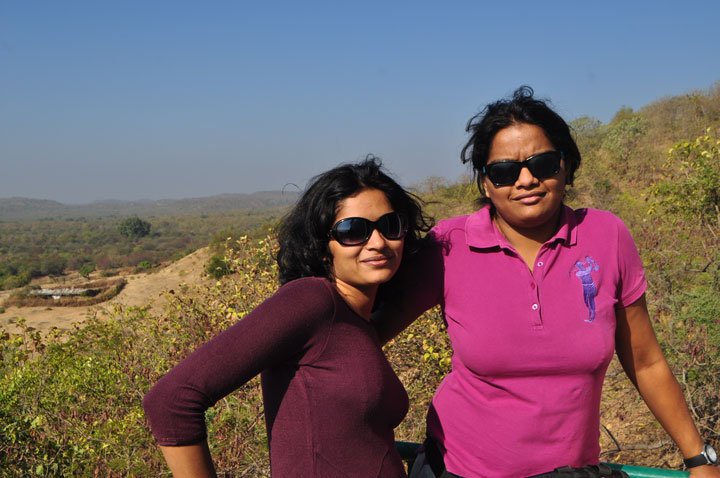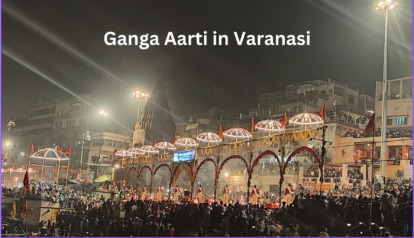Gir National Park, where adventure never stops roaring
Posted on November 10, 2019 by Ghoomophiro

You cannot travel to Gujarat but miss out on the epic journey to the Gir National Park and Wildlife Sanctuary. Deadly as they may sound, Asiatic Lions are a glorious sight to behold and you will not find the sight anywhere apart from Gir.
History of Gir Forest
Girl National Park was made into a wildlife sanctuary in 1965 but even before that, back in the 1900s the lions of Gir forest were declared protected by the then Nawab of Junagadh. Since when Junagadh was a princely state, lions used to be hunted down for pleasure following which only 15 lions remained in the forest. The Nawab decided to conserve the remaining lion population and put a ban on hunting them for trophies. Asiatic Lions once used to be found in Africa, Northern Greece and some other parts of the world but now Gir National Park or the adjoining area is the only remaining habitat of 411 Asiatic lions.
Located in Gujarat, it is the only forest where Asiatic Lions (Panthera leo persica) can be spotted. Situated 65 km away from Junagadh, this Wildlife Sanctuary covers 1412 sq kilometre area. The people of Gujarat refer to it as the pride of Gujarat. We have been to tiger reserves (since there are 15 in the country) but Gir was the first and only Lion reserve we had the chance of visiting.
How to reach the Gir national park?
By road: Junagadh and Rajkot are the nearest cities and public transport is available to take you to Gir.
By Air: Rajkot airport is the nearest airport and is about 3.5 hours away from Gir.
By Train: Junagadh Railway station is the nearest railway station.
Get a permit beforehand
Ever since The Supreme Court has restricted the number of safaris per day in wildlife sanctuaries, it is hard to get a permit. We booked a permit online but it has to be done two months in advance since Gir National Park is on high-demand among wildlife enthusiasts. Safari permit itself costs Rs 500 online and it is the same if you buy it at the counter as well. But considering the long queues at the counter, we were happy about booking our slot online months in advance. Along with the permit, there are separate costs for the jeep and the guide. So overall, the safari would cost you Rs 2200. A jeep accommodates 6 people and you can mention it all while booking online along with giving the ID proof of one individual.
Best safari time-slot and pre-safari work
Gir has 3 slots available in a day for Safaris: 6-9 am, 9am-12pm and 3-6pm. The best time slot is the morning slot because there is less heat and the chances of spotting a lion are also higher. After booking online, all we had to do was go to a separate online counter and get our route number. 7 routes go inside Gir Forest and everyone is allotted their jeep, guide and route. We got Route 4. The entire process took about 10 minutes.
Our visit to the Gir National Park
Gir National Park was always on our list of places to see before we die since it is one of the most talked-about destinations for every wildlife enthusiast. While once the population of lions in Gir used to be scarce, now the density is high due to the efforts of the Forest Department. We visited Gir during April and stayed at The Gateway Resort, Gir which is quite close to the forest range.

The Resort helped us book a lodge for the morning safari and after our morning coffee early at 5 am, we were ready to greet the majestic lions. The best way to travel around Gir National Park is in the jeep so firstly we travelled to the Forest Department office and switched jeeps to go deep inside the forest that we were there to explore.
The safari began at 6 am and we waited at the gates for the morning safari to begin. Gir forest is a dry deciduous forest. The jeep covered uneven paths and gradually we went deeper into the dense forest, our eyes focused on any flash of yellow and our ears keen to hear dry trees and twigs break under the impact of the jeep tyres. We scanned around, careful and excited to see if we could be the ones to spot the lion before our guide. The first animal we came across was a peacock followed by many deers.

An hour passed with us staring at the trees and forest cover. By this time, the sunlight had also started creeping in and spreading on the ground. We had started getting a bit disheartened until we heard a loud roaring sound and our jeep came to a halt. The sound was making ripples across the otherwise quiet forest. Soon, a bike appeared and on it, one man who the guide told us was the caretaker of the lions. He told us a story of how lions had gotten familiar to their scent and uniform that one time a cub had taken it to an injured lioness so he could get her help. He was the one who took us to the lions. The jeep’s engine was turned off and there was complete silence all around. The caretaker was making a kind of whistling sound and we were waiting patiently in our jeeps, hoping to spot a lion or a lioness.

Soon, a majestic lioness came walking with her three cubs. The cubs roared but it was a tiny shrill sound that made us smile with joy. Both our guide and the caretaker were alert and observed their every step. Even though they were familiar with the scene, they are careful in case there is an unprecedented attack.

The lioness got closer to our jeep and we were both scared and excited. We stood still and tried to click a picture only when the lioness turned around or was at a distance. It sat down a short distance away and we started clicking as many pictures with as many angles as we could. The best part about the sight was the tiny cubs who played with grass and often jumped on the lioness in their playfulness.


After staying there for short while, we moved ahead hoping to see another such sight. We came across other animals like a fox and some deer who merrily walked around in the forest. There were some small cottages built by tribals in the middle of the forest as well. The tribe coexisted with the lions in the forest and despite it being a National Park, they were never forced to leave.
We did not catch another sight of the lions but were quite satisfied with the earlier spectacle. Our guide kept pointing out different birds to us and we were surprised by his keen eyesight. The fact that he could point out a brown oil sitting in a brown tree shows something about his expertise. On route 4, there lies a Kamleshwar Lake near to a tower that gives a spectacular view of the jungle. Kamleshwar Lake was the habitat of many crocodiles so we were told to maintain our distance but we were still able to spot the back of a crocodile from a distance. The guide kept us hoping for a leopard sighting as well which is very rare. But unfortunately, we could not spot one.
By 9 pm, our Safari had ended and we moved back to our resort.
When to visit?
The National park is closed during Monsoons so the best time to visit is summers. Gujarat has a very hot climate so during summers, the lions come out to drink water and move around a lot. They are visible at watering holes more often than in any other season. One can visit even in winter since the weather is better and you don’t have to suffer the harsh climate in an open-jeep but the chances of spotting a lion in winter are less. What’s a visit to Gir without spotting a lion in all its glory?
Where to Stay?
There are many hotels and resorts available at Sasan Gir, the best one being The Gateway resort which is part of the Taj Group. Then there is the Sinh Sadan Guesthouse which belongs to Gujarat Tourism. Whatever hotel you book, check the location and availability of a swimming pool. You would want a place as near to the forest as possible for the best experience. Also, after a hot day in the safari, soaking in the pool feels heavenly.







This is a fantastic post, I enjoyed the detailed guide and looking forward to read about your travels. Thanks for sharing with some of us who like to travel.